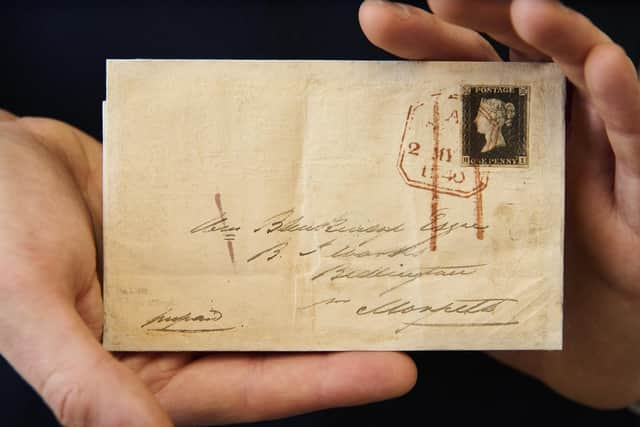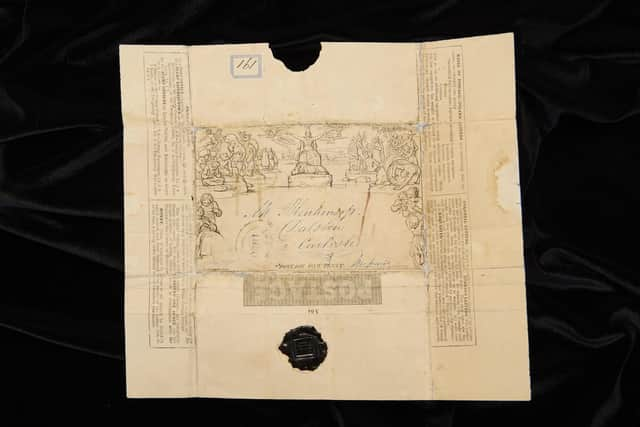Envelope with first ever stamp, sent to Northumberland in 1840, could fetch $2.5m at Sotheby's auction
and live on Freeview channel 276
The unique item was mailed to Northumberland with a Penny Black, the first ever adhesive postage stamp, on May 2, 1840, which was the day after the stamps were first sold and four days before they officially entered public use.
The envelope was then turned inside out and re-posted on May 4, this time making use of the fact that it was a Mulready envelope, a prepaid postage wrapper that also held a value of one penny.
Advertisement
Hide AdAdvertisement
Hide AdAuction company Sotheby’s expects the item to fetch between $1.5m and $2.5m, nearly £2m, when it goes under the hammer in New York on Friday, February 2.


Richard Austin, Sotheby’s global head of books and manuscripts, said: “This unassuming envelope marked a significant leap forward in the history of human communication.
“Surviving over 180 years, the ornate Mulready envelope sealed with a Penny Black revolutionised the way people from all walks of life correspond, exchange ideas, share news, and express themselves.
“At the dawn of the AI age, this remarkable object speaks to our innate human desire for connection and the ways in which it has evolved to new heights in the two centuries since.”
Advertisement
Hide AdAdvertisement
Hide AdThe letters contained within the envelope have been lost to time and remain a mystery, but the postal markings show it was first mailed to William Blenkinsop Jr, the 35-year-old manager of Bedlington Iron Works.


It is theorised that the letter was from William’s brother John, who lived in the south of England at the time, but historians cannot be sure.
When the envelope was posted for a second time it was addressed to Mr. Blenkinsop, Dalston, Carlisle. This is thought to be William Jr’s father, William Sr, the owner of a prosperous cotton mill in the area.
This item is the only combined Penny Black and Mulready cover known to exist.
Advertisement
Hide AdAdvertisement
Hide AdLike Penny Black stamps, Mulready stationery did not enter use until May 6, meaning the paper had travelled 400 miles before any of the postage payment was technically valid.
Mulreadys were an object of ridicule almost immediately but adhesive stamps revolutionised the postal system.
The change from the previous system, which involved post carriers collecting payment upon delivery, was proposed by Birmingham teacher Rowland Hill in 1835 and implemented by the Postage Reform Act of 1839.
Penny Black stamps were changed a year after they were introduced to be red, as the dark colour made it too easy to wash off the ink cancelling the stamps after they had been used.
Advertisement
Hide AdAdvertisement
Hide AdWithin ten years of the reforms, the amount of mail handled by the Post Office rose from 75m pieces to 350m annually.
This will be the first time the item has gone under the hammer since it was sold in Lugano, Switzerland, in March 1991.
It will be auctioned alongside a set of six Air Jordan shoes worn by Michael Jordan himself in ‘championship-clinching’ games; a gold, enamel, and hardstone vase made for the Paris Exposition Universelle in 1855; and other historic items.